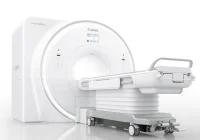Individuals at risk of lung cancer often undergo screening with low-dose CT, a widely used imaging tool designed to detect early-stage malignancies. However, while the primary focus of these scans is the lungs, they also capture images of the heart, providing an opportunity for cardiovascular assessment. Cardiovascular disease (CVD) remains a major cause of mortality in this population, often exceeding the risk of death from lung cancer.
Epicardial adipose tissue (EAT), a fat deposit surrounding the myocardium and coronary arteries, has been identified as a key factor influencing cardiovascular health. It functions as an endocrine organ, releasing cytokines and adipokines that may contribute to atherogenesis. Previous research has linked EAT volume and density to coronary artery disease and cardiovascular events. However, the impact of longitudinal changes in EAT, rather than baseline measurements alone, has not been well understood. A recent study published in Radiology examines the relationship between EAT changes over two years and mortality in individuals undergoing serial low-dose CT lung cancer screening.
The Role of Epicardial Adipose Tissue in Cardiovascular Health
EAT has been recognised as an important marker of cardiovascular risk due to its proximity to the coronary arteries and its metabolic activity. It is influenced by systemic inflammation, obesity and other cardiovascular risk factors. Prior studies have demonstrated that higher EAT volume is associated with increased coronary artery disease burden and adverse cardiovascular outcomes. However, the significance of changes in EAT volume and density over time has remained unclear.
The study utilised data from the National Lung Screening Trial, which included participants aged 55–74 years with a significant smoking history. Using a validated deep-learning algorithm, researchers measured EAT volume and density from serial low-dose CT scans at baseline and after two years. Changes in EAT were categorised as typical or atypical. Typical changes ranged from a decrease of 7% to an increase of 11% in volume and from a decrease of 3% to an increase of 2% in density. Atypical changes were defined as increases or decreases beyond these thresholds. By examining these patterns, the study aimed to determine whether EAT changes could predict long-term mortality risk.
Study Findings: Association Between EAT Changes and Mortality
The study cohort included over 20,000 individuals, with a mean age of 61.4 years. Over a median follow-up period of 10.4 years, 16.9% of participants died. Cardiovascular mortality accounted for 23.4% of deaths, while lung cancer-related mortality was 20.2%.
Findings revealed that atypical EAT volume increases and decreases were both associated with elevated all-cause mortality risk. An atypical decrease in EAT volume was significantly linked to a higher likelihood of cardiovascular mortality, suggesting that reductions in EAT beyond expected levels may indicate worsening cardiovascular health. Meanwhile, an increase in EAT density was associated with increased all-cause, cardiovascular and lung cancer mortality, further reinforcing the role of EAT as a relevant factor in disease progression.
Recommended Read: Advancing Lung Cancer Screening with Ultra-Low Dose Spectral CT
The relationship between EAT changes and mortality remained significant even after adjustments for baseline EAT values, coronary artery calcium scores and other traditional cardiovascular risk factors. This suggests that variations in EAT provide additional prognostic information beyond conventional markers of cardiovascular risk. The study also observed a U-shaped association, where both excessive increases and decreases in EAT were linked to worse outcomes, highlighting the importance of maintaining stability in adipose tissue dynamics.
Implications for Cardiovascular Risk Assessment
These findings indicate that serial low-dose CT scans used for lung cancer screening could serve a dual purpose by also providing valuable insights into cardiovascular risk. Given that lung cancer screening is already a well-established practice, incorporating EAT evaluation into standard assessments could enhance patient care without requiring additional imaging procedures.
The use of deep-learning algorithms in the study suggests that automated EAT measurement could be seamlessly integrated into clinical workflows. This approach would allow for routine monitoring of EAT changes over time, enabling healthcare providers to identify patients at increased cardiovascular risk and consider targeted interventions. Future research is needed to explore whether lifestyle modifications, pharmacological treatments or other strategies could mitigate the risks associated with atypical EAT changes.
The study highlights the prognostic significance of EAT volume and density changes over time. While previous research has focused on baseline EAT levels, these findings suggest that dynamic changes in EAT are also critical in assessing long-term health risks. Atypical increases and decreases in EAT volume, as well as increased EAT density were independently associated with higher mortality, reinforcing the need for continued cardiovascular monitoring in individuals undergoing lung cancer screening.
Incorporating EAT assessment into routine CT analysis could improve cardiovascular risk stratification and enable early interventions. By leveraging the information already available in lung cancer screening scans, healthcare providers may be able to offer more comprehensive risk assessments, ultimately improving patient outcomes.
Source: Radiology
Image Credit: Vecteezy










